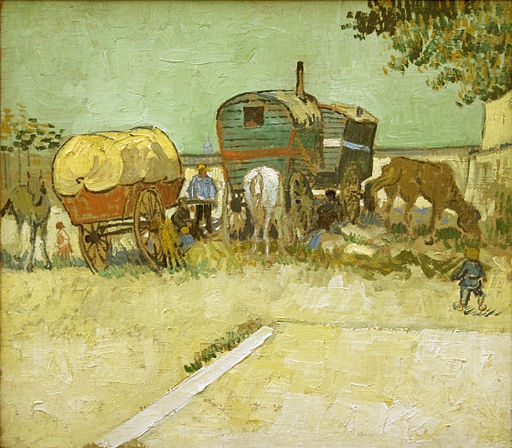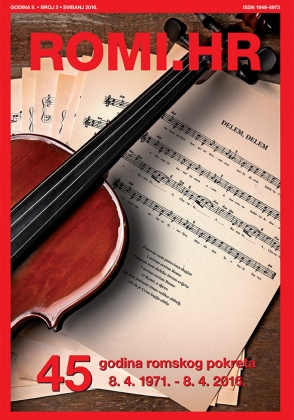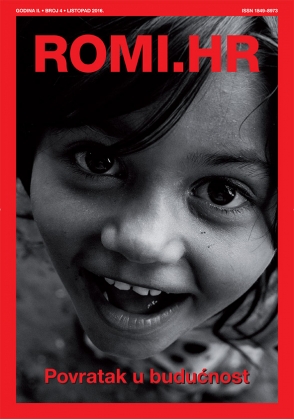Features ROMI.HR
/Dive into the world of Vincent Van Gogh’s evocative painting, "Encampment of Gypsies with Caravans," and explore the rich cultural tapestry of Roma life depicted through his post-impressionist lens. This article delves into the context of the Roma people during the late 19th century and examines how Van Gogh’s artistry captures their vibrant and nomadic existence. Uncover the stories behind the brushstrokes and the role of the Roma in shaping this mesmerizing piece of art.
In the 18th and 19th centuries, the depiction of Roma in paintings was a popular theme among artists. Roma, a nomadic people, were associated with romance, exoticism and freedom. These images were often used in art to convey the spirit of free life and mystery. However, such images were often stereotypical and did not always reflect the reality of Roma life.
Post-Impressionism is an art movement that developed in the late 19th century as a reaction to Impressionism. Post-Impressionists such as Van Gogh, Paul Cézanne and Georges Seurat sought deeper expression of emotion and used brighter colors and experimental techniques. They moved away from the Impressionists' focus on direct depictions of light and atmosphere, focusing on structure and symbolism.
Vincent Van Gogh (1853-1890) was one of the most influential Post-Impressionist artists. His life was full of suffering, which was reflected in his works. Van Gogh used bright colors and expressive brushstrokes to convey his inner experiences and emotional states. During his life, he created more than 2,100 works of art, including approximately 860 paintings and more than 1,300 drawings and sketches. His work only became recognized after his death, but today he is considered one of the greatest artists of all time.
The painting «Encampment of Gypsies with Caravans» (1888) depicts a scene from the life of Roma. Vincent van Gogh painted the caravans near Les Saintes-Maries-de-la-Mer, a village in the Camargue with its annual pilgrimages for many Romani.
Van Gogh was interested in all aspects of human life, especially the lives of the marginalized and poor in society. In his letters, he often mentioned his meetings and observations of ordinary people, including peasants and workers. Although there is no direct evidence of Van Gogh's contacts with Roma, his painting «Encampment of Gypsies with Caravans» (1888) reflects his general interest in the lives of people on the fringes of society. Roma leading a nomadic lifestyle may have been seen by Van Gogh during his stay in Arles, which inspired him to create this painting.
The painting depicts Romani carts and a camp set against a backdrop of trees and sky. At the center of the composition is a Roma family, including a boy, which gives the scene vitality and charm. Van Gogh uses rich colors to convey the warmth and brightness of the southern French sun. The dominant colors are yellow, orange and green, which create a cheerful atmosphere. The painting is made with expressive brushstrokes characteristic of Van Gogh. This technique gives the image dynamism and energy. The composition of the picture is balanced and harmonious. The carts and Roma figures are arranged in such a way that the viewer’s eye moves smoothly across the entire canvas.
Van Gogh's Roma people look like part of nature, their camp merges with the surrounding landscape. The artist focuses on their simplicity and closeness to the earth, emphasizing the harmony of their existence with the surrounding world.
Although Van Gogh tried to convey the spirit and atmosphere of Roma life, his image hardly fully reflects reality. The painter in his work conveys the emotional and visual atmosphere of the Roma camp, and not the exact details of their life. The bright colors and dynamic brush strokes convey the energy and liveliness of Roma life, which is consistent with their culture. However, the specific details of the camp, clothing and activity of the Roma in the painting are more artistically interpreted than documentary accurate. Like many artists of his time, he probably relied on romanticized and stereotypical ideas about the people. However, his painting conveys a certain respect and sympathy for the characters depicted.
Vincent van Gogh's «Encampment of Gypsies with Caravans» (1888) is an important example of Post-Impressionism and reflects both the artist's interest in depicting everyday life and his unique style. Although the painting may not fully reflect the reality of life for the Roma, it demonstrates Van Gogh's desire for deep emotional expression and his ability to create picturesque and moving scenes.
 Back to Features
Back to Features













